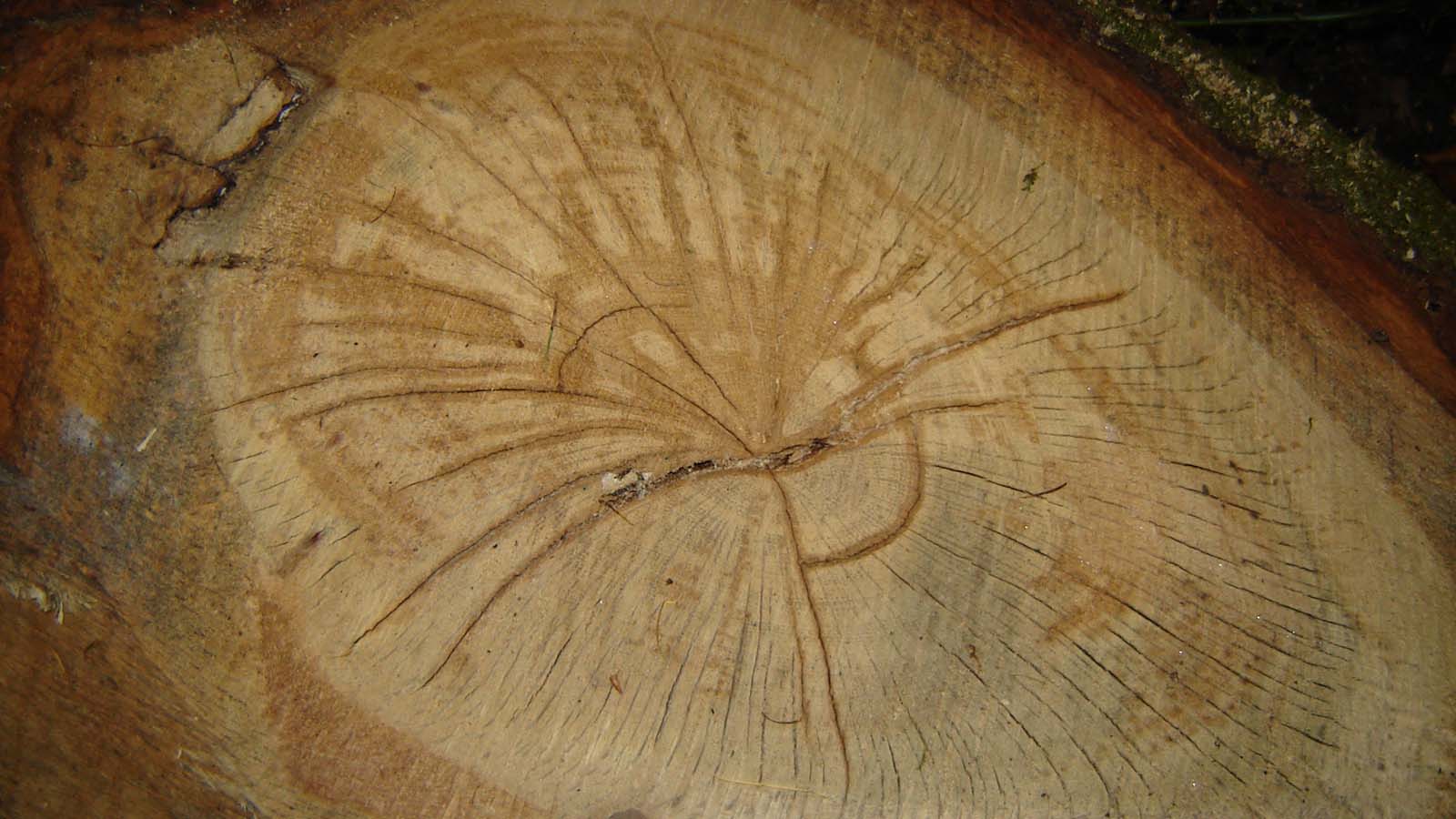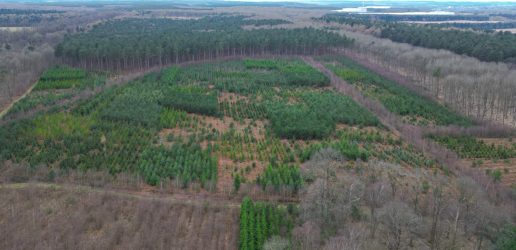Oak is a crucial broadleaved tree species for biodiversity and hardwood timber but it’s susceptible to shake – an internal cracking that can occur in the stem and is often only detected once the tree has been felled.
“We know shake has a big impact on oak growers as it can reduce the value of really high-quality stems down to just firewood,” said Dr Joe Beesley, Spatial Scientist at Forest Research.
“With the felling season soon approaching, we’re asking woodland managers to report any instances of shake that they observe when felling oak in their woodlands.”
Report oak shake via TreeAlert, and complete an abiotic report.
By reporting instances of shake, woodland owners will contribute to a new research project seeking to improve our understanding of the drivers of oak shake.
Report oak shake via TreeAlert

The Defra-funded Centre for Forest Protection project, led by Forest Research and Royal Botanic Gardens Kew aims to identify reliable external indicators of shake, such as stem form and the timing of budburst.
Working with experts at Edinburgh Napier University, scientists are developing a non-destructive testing methodology to detect shake within standing trees using sonic tomography – which assesses the internal condition of trees by analysing how sound waves travel through the wood – and resistance microdrilling – which measures wood resistance using a fine drill needle to detect internal defects.
Reporting oak shake is easy, simply visit the tree health reporting platform, TreeAlert, and complete an abiotic report.
Recent News
View All news
Seventeen coniferous tree species show early promise for future commercial timber production in the UK
Researchers have set up a network of nine large scale experiments across the UK to test the suitability of 17 tree species as potential alternatives for future commercial timber production.
Forest Research are looking for people involved in the harvesting, processing, transport, import, or trade of firewood in Scotland to complete an important survey.

New guide to help local authorities conduct a people survey on the social value of their treescapes
A new step by step guide to help local authorities, charities and civic societies carry out a people survey to understand social and cultural values related to trees in their area, is now available.

Seventeen coniferous tree species show early promise for future commercial timber production in the UK
Researchers have set up a network of nine large scale experiments across the UK to test the suitability of 17 tree species as potential alternatives for future commercial timber production.
Forest Research are looking for people involved in the harvesting, processing, transport, import, or trade of firewood in Scotland to complete an important survey.

New guide to help local authorities conduct a people survey on the social value of their treescapes
A new step by step guide to help local authorities, charities and civic societies carry out a people survey to understand social and cultural values related to trees in their area, is now available.

